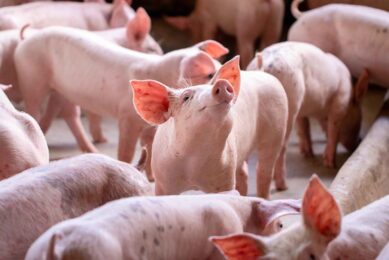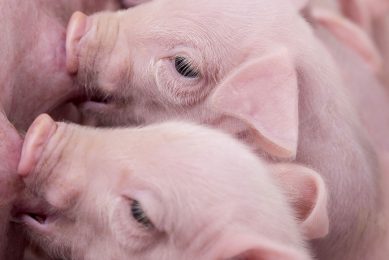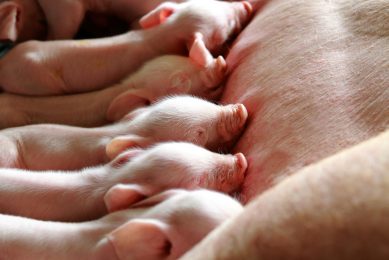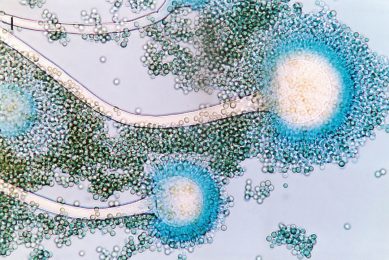Summer infertility in pigs addressed
It is well known that the wild European pig is a seasonal breeder, being more active under ‘short days’; thus summer ‘infertility’ when day length is long in the northern hemisphere is common. This also appears to be particularly the case with outdoor-reared commercial animals that are more exposed to ‘natural’ day length changes than those housed indoors.
A major database survey conducted at the University of Nottingham, in collaboration with JSR Genetics and the Roslin Institute funded by Defra, concluded recently that seasonality is not a genetically-controlled trait and therefore cannot be influenced through selective breeding. Many outdoor units, however, still report seasonal infertility in terms of increased numbers returning to oestrus and smaller litter sizes. However, is day length actually responsible and, if so, can anything be done to combat its effects?© For example, if day length is responsible why aren’t problems experienced before June? Also why are there year-by-year differences when day length is constant?
So, what about rainfall and temperature? Studies in the tropics have revealed smaller litter sizes in the wet season. Anecdotally, hotter UK summers have been linked to reduced fertility due to heat stress decreasing semen production and increasing semen abnormality rates.© However, both these rainfall and temperature theories go against the relatively colder, wetter recent UK summers that have been associated with greater problems than usual.
Whilst there are plenty of studies looking at climatic variables, none of these factors can actually be changed (we have to live with the weather/ daylength!), so we discussed some practical advice on tackling summer infertility.
Whilst the most likely cause of seasonal infertility is climatic variation, what can producers do in terms of management and animal husbandry to lessen its effects? For example, oestrus is probably less evident, and more difficult to detect, in the summer months. The length of the oestrus cycle may also be slightly longer, so it could be worth checking for returns over a longer period than usual.
Tip ONE: Consider changing observation routines during the summer months. Be SURE that that the sow is not showing signs of oestrus. If she was served on day 0, check her on day 20 and for a couple of days after. Also remember, it will be more difficult to AI at optimum times – again this needs greater attention in the summer.
Whilst it’s easy to encourage staff to walk an outdoor herd enough on a hot summer’s day, what about during our recent cold, wet summers?
Tip TWO: Consider a bonus scheme based on sow productivity – that usually works!© The argument that productivity is better in the inclement winter is another way of saying that we accept the summer fall in output.©
Another issue is the importance of nutritional influences. European wild pigs commence oestrus activity earlier when food is more abundant. In commercial breeding herds, sows lose condition during lactation – the more so the longer the lactation – and lower feed intake is usual as ambient temperatures rise. What measures should producers take to ensure nutrition isn’t the cause of summer infertility?
Tip THREE: Check the body condition of all breeding sows, not just those outdoors, more carefully during the summer and try to feed accordingly. We know it’s difficult to feed outdoor group-housed sows individually, but at least consider how this might be achieved.
In the aforementioned database study, unaccountable reductions in fertility arising from service were noticed in the week between Christmas and New Year, and mid-summer (typically during August). The latter could easily have been labelled ‘summer infertility’ but what about the former?
Tip FOUR: These are all times when experienced staff take holidays leaving less qualified ‘casual labour’ as a short-term replacement. Even unit owners, no longer managing units on a daily basis, can be found wanting as ‘stand-ins’. Never underestimate the value of experienced, dedicated staff. Competence is essential 52 weeks of the year!
So finally the boar. What is his role in contributing to – and combating – summer infertility? Motility scores and the proportion of live sperm decrease during the late spring onwards and the peak during late winter is the main issue. Libido has seasonal fluctuations, although the dominance of AI is making this less important.© AI units account for the reduction in semen quality by changing patterns of dilution or disposing of unsuitable sperm. However, donating semen is not the only value of a boar!
Tip FIVE: Exactly! Oestrus detection is better handled by a boar, no matter how competent staff may be. Our final tip would be to consider running a mature (vasectomised) boar with an outdoor unit. He will also be of value based on the ‘boar’ effect and could make oestrus itself ‘stronger’ thus overcoming seasonal inhibition of fertility.
Julian Wiseman, Professor of Animal Production, at the University of Nottingham introduced the topical problem of summer infertility in pigs in a discussion with Dr. Grant Walling, Director of Research and Genetics at JSR Genetics to provide expert advice on this issue.
©











